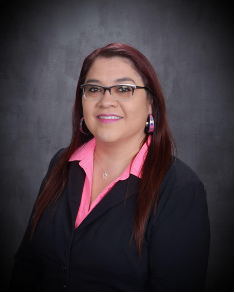
Greetings!
My name is Melanie Nadeau, and I am a citizen of the Turtle Mountain Band of Chippewa Indians. I am currently serving as the Graduate Program Director for the Indigenous Health PhD program, which is housed in the School of Medicine and Health Sciences at the University of North Dakota. The theme for this blog is Indigenous Evaluation.
Hot Tips
Use an Indigenous Evaluation Framework to engage and build evaluation capacity with tribal communities.
A great resource to use when working with tribal communities is the American Indian Higher Education Consortium’s Indigenous Evaluation Framework, written by Dr. Joan LaFrance and Dr. Richard Nichols. Content includes: Framing Evaluation in our Communities, Weaving the Basket, Creating Knowledge, Core Cultural Values, Engaging Community in Evaluation, Creating our Story, Building the Scaffolding, Responsive Information Gathering and Planning, Implementing and Celebrating. This resource includes a bibliography, exercises, resources and readings. In developing the Indigenous Framework for evaluation, the authors worked with stakeholders to develop guiding principles which were drawn primarily from the values, knowledge and histories of tribal people in the United States. The Framework can be applied to any tribal community evaluation process and used to build evaluation capacity at the program and community level.
Lessons Learned
In applying the Indigenous Evaluation Framework, stakeholders identify their core cultural values and translate these values within the context of their work. Framing evaluation practices responsive to strongly held values is a continuously evolving process. There is not one set of steps or practices that define Indigenous Evaluation. What it is or becomes will emerge from our collective attempts to ensure that traditional values are at the core of any approach to evaluation programs in tribal communities.
Rad Resources
Keeping Track – A Toolkit for Indigenous Youth Program Evaluation
NB3 Foundation released ‘Keeping Track’: A toolkit for Indigenous Youth Program Evaluation on March 31, 2022. The purpose of this toolkit is to serve as “a guide for practitioners and staff in their overall strategies and day to day understanding of program impacts”. The guide is very comprehensive and includes activities, guidance, scenarios, and resources. The guide is culturally grounded, defining an evaluation process that is based upon an agricultural/natural framework. The conversation starters and Think Inside the Hoop are creative strategies for engaging the audience of application. The toolkit was peer-reviewed by Indigenous evaluators, and a list of Indigenous evaluators is provided.
The American Evaluation Association is hosting Indigenous Peoples in Evaluation (IPE) TIG week. All posts this week are contributed by members of the IPE Topical Interest Group. Do you have questions, concerns, kudos, or content to extend this aea365 contribution? Please add them in the comments section for this post on the aea365 webpage so that we may enrich our community of practice. Would you like to submit an aea365 Tip? Please send a note of interest to aea365@eval.org. aea365 is sponsored by the American Evaluation Association and provides a Tip-a-Day by and for evaluators. The views and opinions expressed on the AEA365 blog are solely those of the original authors and other contributors. These views and opinions do not necessarily represent those of the American Evaluation Association, and/or any/all contributors to this site.
